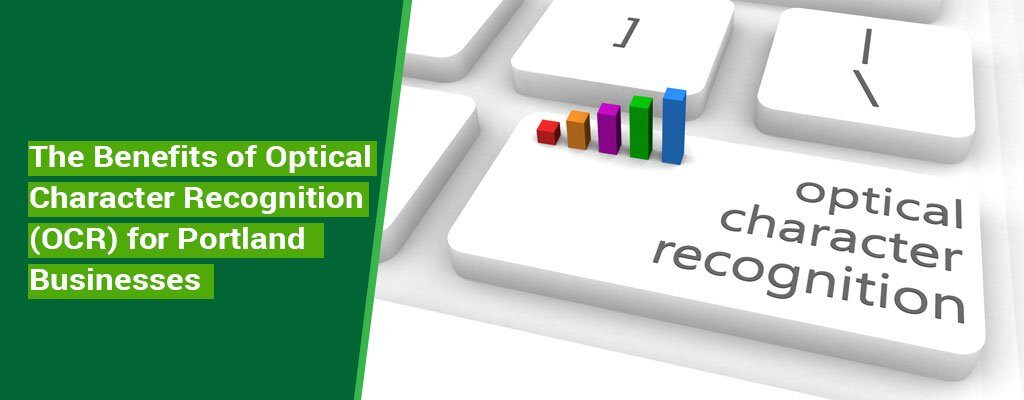The Benefits of Optical Character Recognition (OCR) for Portland Businesses
Contents
In many ways, OCR is one of the most common forms of readily available machine intelligence systems in history. The ability to digitize analog information into context-specific, manageable chunks of data is a powerful tool for any process that relies heavily on your ability to process information automatically.
Power Stations use OCR technology to modernize physical, legacy drawings into digital asset models, while legal firms scan historic records to quickly search and retrieve essential information pertaining to litigation. Optical Character Recognition (OCR) technology helps countless companies leverage experience into actionable information every day.
The History of OCR Technology
Emanuel Goldberg developed a system for using a pattern recognition system to interpret pages of information into tones back in 1914. Since then, the benefits of having analog to digital interchangeable formats was clearly evident. Consequently, plenty of patents arose and were then acquired, sold, enhanced upon and improved. Today, almost any scan of a hardcopy document is reproducible in an editable format.
Some of the modern OCR applications include:
- Data entry including complex drawings or business documents.
- Number plate recognition and passport verification.
- Pen computing that converts digital writing into text.
- Insurance filings, as well as document indexing, recapturing and reconstruction.
OCR outputs are generally as good as the predefined inputs. While text recognition is the predominant reason for using the technology, you can adapt it to any kind of situation where records should become data quickly.
The Benefits of OCR Technology
Notwithstanding any of the above, the modern digital world constantly attempts to leverage humanity’s history into accessible portions of relevant information. For instance, Google Books catalogs exact copies of text for quick search and retrieval of the content. The information retrieved is either copyright protected (with snippets being available to everyone) or completely accessible in the public domain. The benefits of making information searchable, retrievable, and editable quickly become self-evident.
Industries that benefit from OCR technologies include:
- Asset management firms that need to establish a current digital representation of a newly acquired asset.
- Legal firms seeking to capture and query historical documents.
- Environmental and engineering consultants seeking to do due diligence.
- Shipping and distribution companies that automate physical document processing.
- Translation services and software companies that catalog information into searchable text.
Implementing Optical Character Recognition technology at your Portland business can assist with automatic invoice capturing, document reconstruction, and data capturing. Anytime you need to reconstruct text into digital information or editable text, OCR can assist you gain better efficiency.
Challenges to Implementing OCR
For OCR to be effective, there needs to be a detectable difference in contrast between text and background. With solutions like ABBYY FlexiCapture, you can map specific sections of a document (such as an invoice) to data fields. Setting up templates for different types of scanned documents allows companies to scan, capture, and process business information delivered in hardcopy format.
Additional challenges with implementing OCR include:
- Scene Complexity – When too much information reduces the contrast of text or images making it harder to detect.
- Uneven Lighting – If the scanner creates a shaded image on the page, creating an uneven distribution of contrast.
- Skewness and Rotation – Skewed lines of text will fail to produce accurate results from the scanned documents.
With the quality of modern scanners and the standard formats of business documents, the above should not prevent companies from implementing OCR for document processing. The ability to automate financial document capturing speeds up the accounts payable process, while also freeing up resources and reduces human error.
When you implement OCR technology as part of a managed service that includes both the MFP (multifunction printer) as well as an integrated document management system, you can gain even greater efficiencies. Modern document management tools include workflow management, ensuring you capture, index, file, and route all information accurately every time.
Optical Character Recognition Experts
OCR works for any image, whether generated from a scan or a digital camera. While scanned images provide better results due to the higher contrasts, you can also process phone camera images of documents taken by staff. There are many different day-to-day office-based scenarios where OCR technology can improve your office productivity.
Kelley Create provides office productivity solutions in Portland, Oregon and the Pacific Northwest since 1974. A team of dedicated staff and consultants are available to assist you with technology selection, process mapping, and system automation. Wherever a repetitive task is consuming too much time from your resources, Kelley Create can assist with advanced solutions that bring new efficiencies to your business.
To start implementing a digitization strategy for information processing at your Portland office or distribution centers, call one of Kelley Create’s expert consultants today.



